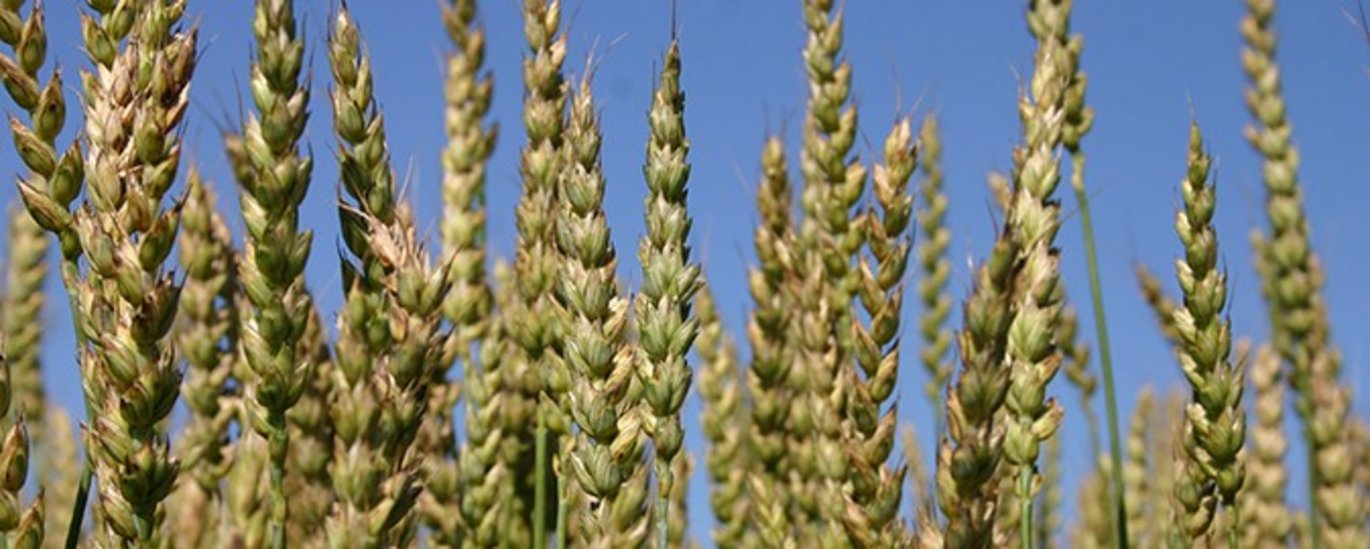Why do different wheat cultivars respond differently to climate change?
Global climate change is putting pressure on our wheat crops with rising temperatures, droughts and higher concentrations of CO2, but the different wheat cultivars respond very differently. Researchers from Aarhus University, among others, have come closer to understanding why this is the case - and thereby a step closer to climate-proofing the wheat of the future.

Rising temperatures, drought and higher concentrations of CO2. Global climate change is putting pressure on all food crops but the responses might vary.
Wheat cultivars respond differently to various types of climate stress. Researchers from Aarhus University, among others, have taken a closer look at the reason for this. Research efforts took place within the framework of MODCARBOSTRESS, a European research network with partners from seven universities.
The same type of experiments was made at all seven universities, and Professor Carl-Otto Ottosen from the Department of Food Science has been responsible for the research at Aarhus University:
- We use two crop models to assess the effects of the variations that may be in relation to the climatic stress, but this is associated with greater uncertainty when it comes to several different stress conditions at the same time. We must include temperature, water supply and CO2 in the equation - and we must take into account the fact that different cultivars of wheat react differently. It is like juggling many balls of different sizes. With this study, we have, in collaboration with crop model researchers, tried to improve our juggling, and thereby improve the models.
A new piece in climate-proofing the wheat of the future
Based on the two wheat cultivars Paragon and Gladius, researchers have shed new light on what separates their reactions from each other when exposed to different forms of stress at the same time. Until now, most studies have focused on a single stress factor for the sake of simplicity, and it has only rarely included CO2.
- It is important to look at the overall picture. Several types of stress can both amplify and weaken the effect of stress. Individually, drought and heat stress give the opposite response in the stomata. Drought tolerance requires low evaporation to hold on to the liquid, while heat tolerance requires high evaporation to cool the leaves, says Carl-Otto Ottosen.
Researchers can now conclude that the two wheat cultivars differ significantly in their growth and physiological response to climate change scenarios:
- The photosynthesis of Paragon was particularly negatively affected by heat stress, and to some extent by water stress, while Gladius was particularly affected by water stress. Yet Gladius developed faster than Paragon under water stress. Gladius was able to produce the same amount of biomass as during ordinary irrigation, especially by developing the biomass in the stem and plant height and by producing the flowering shoots early, however at the expense of the leaf mass and the production of shoots, says Carl-Otto Ottosen and adds:
- Overall, Gladius proved to be more resistant to several simultaneous stressors. Gladius thus has greater phenotypic plasticity - it is simply better at adapting to changing environments. It is new knowledge and another piece in our work to climate-proof the wheat of the future.
Carl-Otto Ottosen has just started a new project, SUSHWEAT, which received a grant of DKK 11 million from the Independent Research Fund Denmark to investigate the effects of various simultaneous types of stress together with elevated CO2 on Nordic wheat cultivars in more detail.
| Additional information | |
|---|---|
| We strive to ensure that all our articles live up to the Danish universities' principles for good research communication (scroll down to find the English version on the web-site). Because of this the article will be supplemented with the following information: | |
| Funding | The study was funded by Innovation Fund Denmark and by Dutch Scientific Organisation as a part of the ERANET project MODCARBOSTRESS. The participation of Franziska Ellers in the project was funded by an individual grant by the Carlsberg Foundation. |
| Collaborators | The scientific article, on which this article is based, is written by Franziska Eller and Carl-Otto Ottosen from the Department of Food Science at Aarhus University and by Benita Hyldgaard, who is affiliated with both the Aarhus University Department of Food Science and the Department of Biology, and Steven M. Driever from the Center for Crop Systems Analysis at Wageningen University in the Netherlands. |
| Read more | Read more in the scientific article "Inherent trait differences explain wheat cultivar responses to climate factor interactions: New insights for more robust crop modelling" by Eller, F., Hyldgaard, B., Driever, S. M., & Ottosen, C. O., som findes her. Read more about the following project SUSHWEAT, which has just begun, in the article ”Large grant for climate protection of the wheat of the future”. |
| Contact | Carl-Otto Ottosen, Department of Food Science - Plant, Food & Climate, Aarhus University, e-mail: coo@food.au.dk, tel.: 22903105 |
